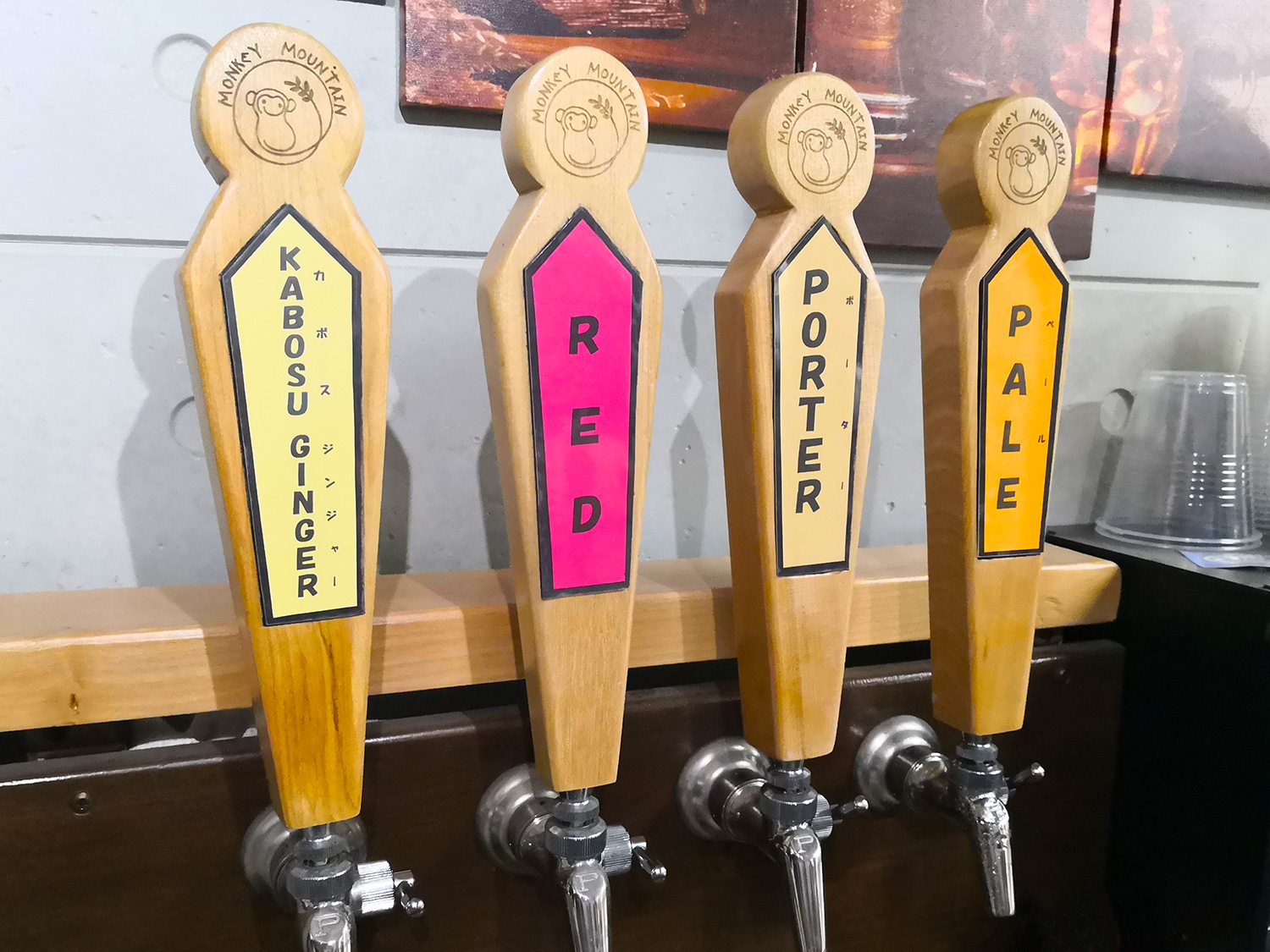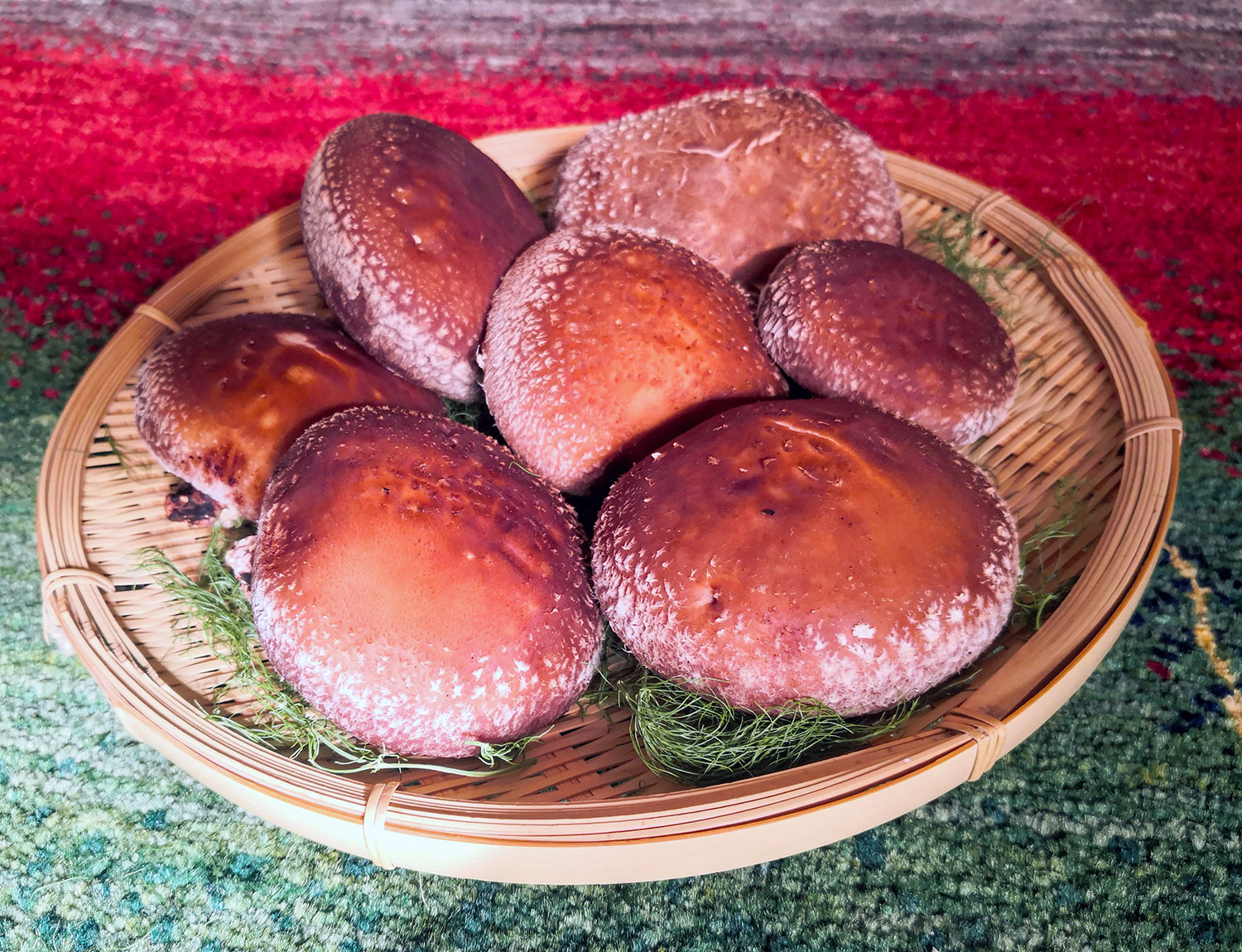
Monkey Mountain Craft Brewery
The Monkey Mountain Craft Beer brewery is one of those pocket-sized delights that Japan as a whole…

Any exploration of Oita’s thickly forested countryside inevitably leads to shaded leafy corners where logs stand in quietly regimented lines. These are the source of shiitake, one of Oita’s prized foods.
An edible mushroom native to East Asia, shiitake grown in the wild are thought to have been first brought from China to Japan in the 9th Century. Some 600 years later, in the 1640s, cultivation methods were first developed in Bungo, current day Oita Prefecture. Since then, shiitake farming has spread throughout Japan and, in recent decades, widely across the world. Oita, however, is still strongly associated with this fungi delicacy especially highly-prized dried shiitake produced using the traditional method of genboku logs.
These logs, which can be of konara jolcham oak or shii beach trees but are usually kunugi sawtooth oak, are hosts to the mycelia, fungal colonies, that each autumn and spring spawn the shiitake mushrooms. Harvest, which is by hand, is a peaceful almost meditative process that belies the labourious hard work required to reach this stage.
In the early winter, trees are felled and left until the new year when they are cut up into one metre lengths, the genboku logs. The larger their girth the heavier they are and from hereon all have to be individually manhandled several times over. After each log has been drilled multiple times and the resultant holes stopped with a plug of shiitake spores they are laid together in stacks. These are then covered with tree branches for shade. Two years later, after the spores’ mycelia have spread throughout the wood, each log is then lifted carefully - as the bark must not be damaged - by hand and transported, more often than not off steep hillsides, to the forest glades were they are assembled into their productive rows. For the following four to five years, the mycelium absorb nutrients from the logs to create the shiitake, a process that eventually leaves the wood worked out and transformed into a friable mass ideal for composting. At which point they are replaced with logs that had been cut and inoculated with spores two years previously. The kunugi trees, meanwhile, have been growing from their cut stump and are ready to be felled once again after 12 to 14 years.
Shiitake, which are grown completely naturally without use of any fertilisers or other chemicals, are usually harvested in the morning, especially after precipitation, when the mushrooms are not fully open; the gills are exposed underneath but the caps are still rolled under. Grading is according to the degree of openess and patterning on the cap top with the highest quality accorded donko status.
Shiitake are grown throughout Oita but genboku cultivation, as opposed to production using artificial substrate beds, is centred on the Kunisaki Peninsula and Usa region. The symbiotic combination of kunugi forests used in shiitake production and the myriad ponds created to water rice paddies found in the area have created an environment so unique that it was designated by UNESCO as Globally Important Agricultural Heritage System (GIAHS) in May 2013.
Oita’s shiitake have a meaty texture with a highly aromatic and known particularly for umami, one of the five tastes alongside sweet, salty, sour and bitter. Drying the mushrooms only deepens this flavour. Not surprisingly they feature heavily in Japanese cuisine and are included in soups, sautéed, and deep fried as tempura. A favourite dish in Oita often served on special occasions is okuwa-mochi, chopped shiitake steamed with glutinous rice.
Besides adding a zest to meals, shiitake are also nutritionally rich with Vitamins B5, B6 and D2, and trace minerals such as riboflavin, niacin, folate, zinc and selenium. The amount found in the shiitake depends greatly on how and where they are grown and prepared, a skill long perfected in Oita. Not surprisingly, shiitake is used in traditional Chinese medicine, and widely considered to boost the immune system, lower cholesterol, and to potentially protect against cancer.